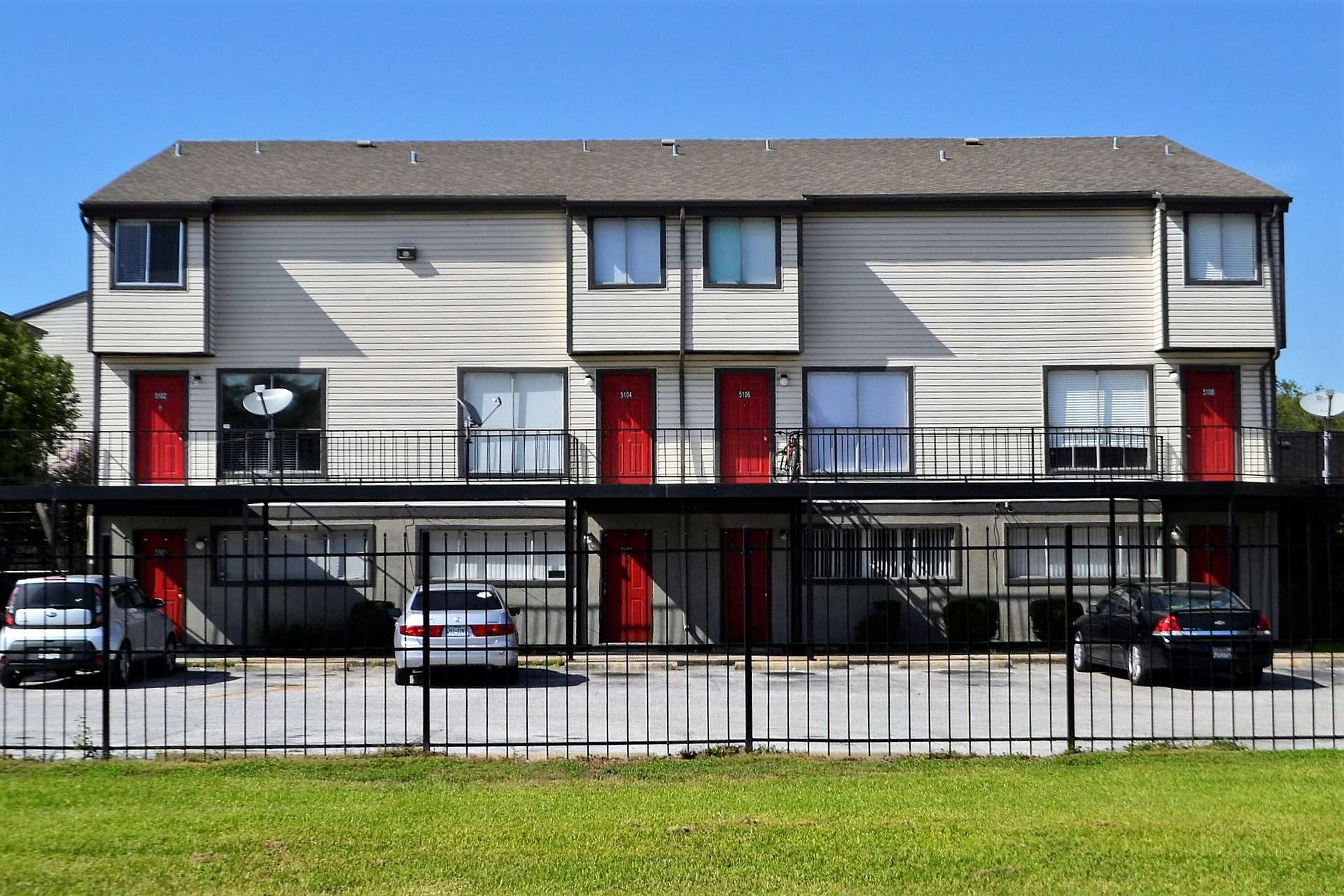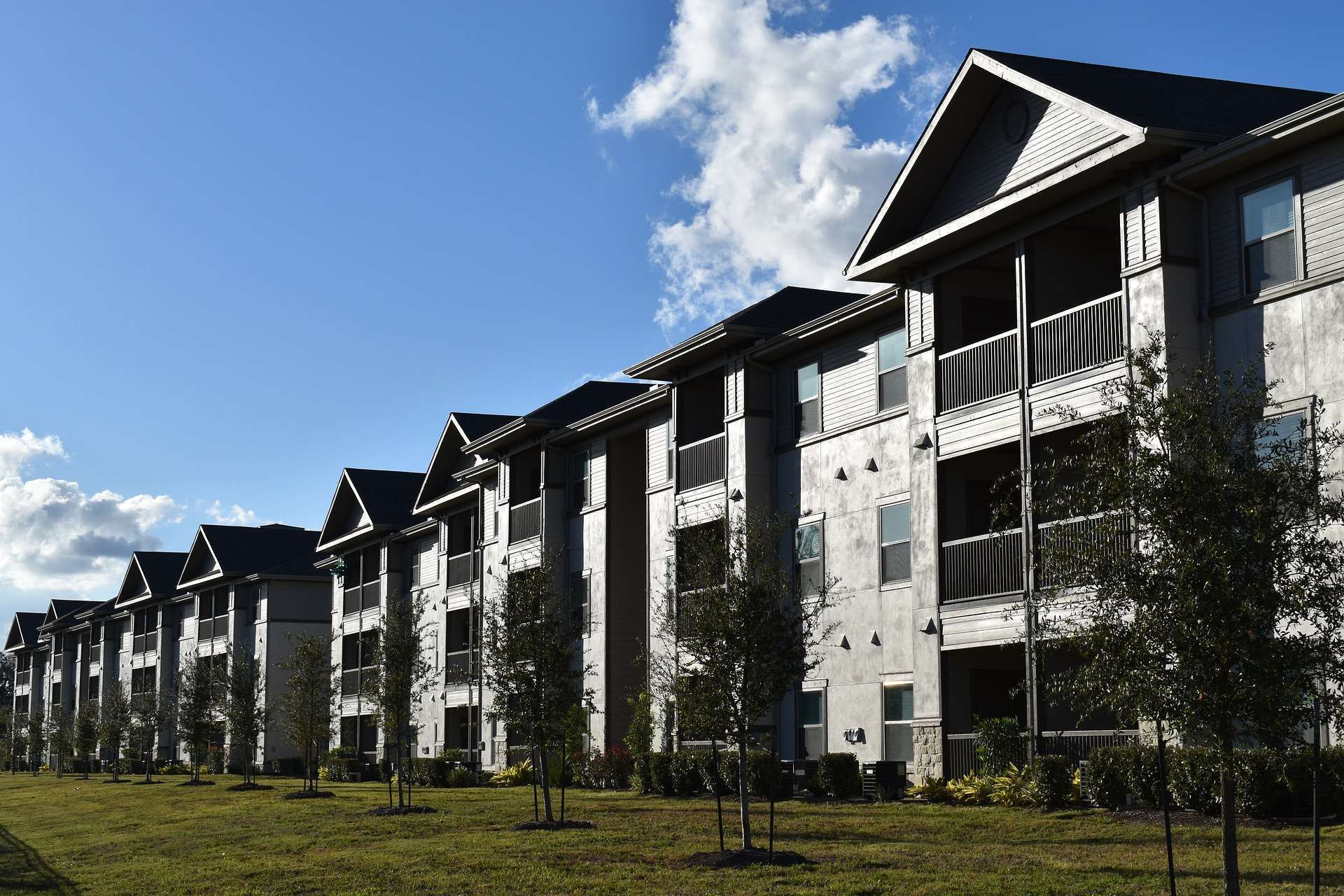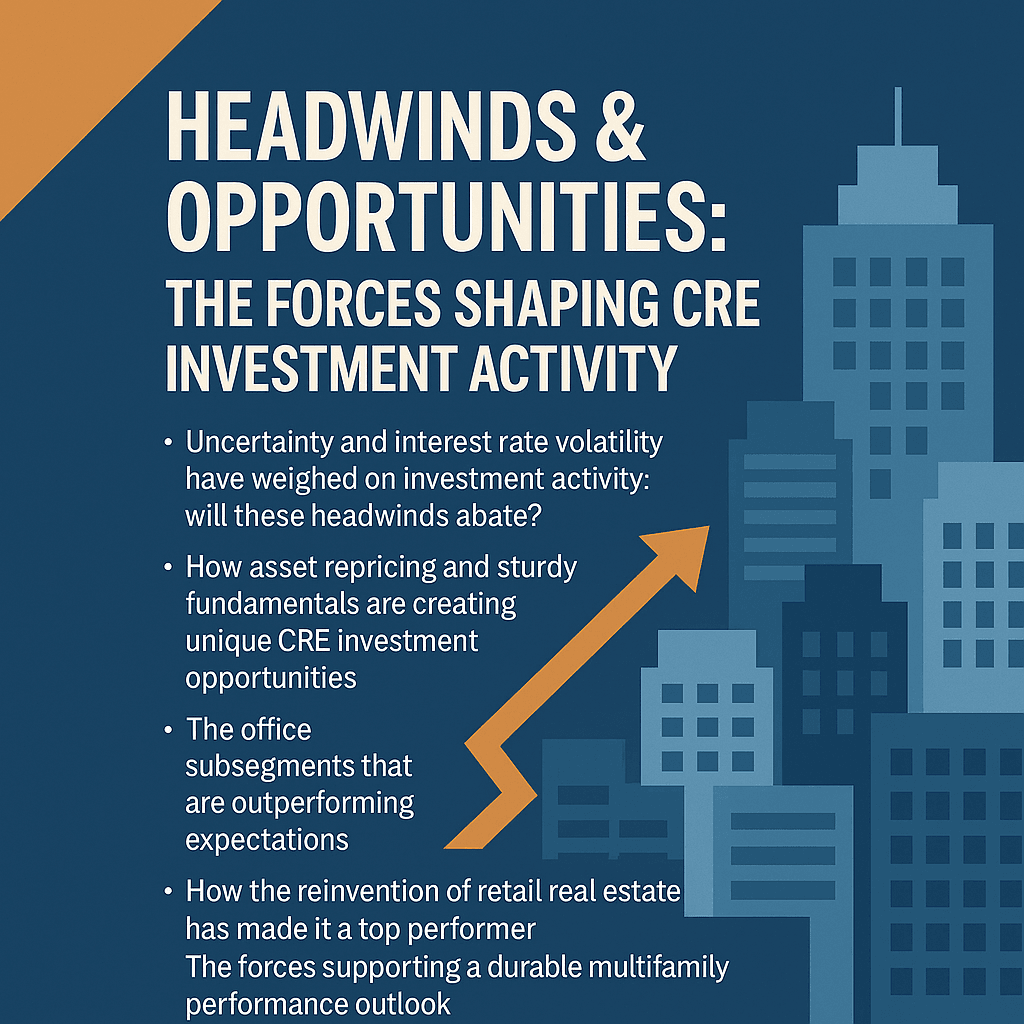$425,000 | Heavy Value-Add | 20.5% Cap Rate (Proforma)
631 E Lincolnway | Morrison, IL 61270
https://www.creconsult.net/for-sale-heavy-value-add-23-unit-multifamily-property-morrison-il/

eXp Commercial is one of the fastest-growing national commercial real estate brokerage firms. The Chicago Multifamily Brokerage Division focuses on listing and selling multifamily properties throughout the Chicago Area and Suburbs.


As of October, when interest rates were 7%, the average household income needed to cover a mortgage for a Chicago starter home was $63.4K. But the average income of renters was $43.6K, according to Point2Homes research.
That means Chicago renters make only 69% of the income needed to become first-time homeowners, according to Axios reporting on the study.
Point2Homes data indicates the average cost of a Chicago starter home is $204.7K, effectively pricing out many renters given rising interest rates and shrinking single-family housing stock. Only 15 of the 50 largest U.S. cities offered average starter homes for less than $200K, the traditional affordability cutoff for first-time homeowners. Rising mortgage interest rates, high housing prices, and limited inventory make it harder for people to buy their first homes. According to the report, "the modest, bare-bones homes of yesteryear have become the stuff of myths and legends." About 70% of all new builds were starter homes in the 1940s and 40% in the 1980s, but the percentage had fallen to 7% by 2019, according to Census Bureau figures. "Renters’ homeownership dreams don’t match the reality in almost any of the large U.S. housing markets," the report's authors said. Earlier this year, Business Insider reported that first-time home homeowners struggled to afford the typical 20% down payment on a home, which averaged $78.4K based on median home prices when the article was published in March.Source: Chicago Renters Only Make 69% Of The Income Needed To Afford Starter Homes
https://www.creconsult.net/market-trends/chicago-renters-only-make-69-of-the-income-needed-to-afford-starter-homes/
Before we welcome 2023, let’s look at 2022 and how the New York City investment sales market performed, where we are now, and where we might be headed in the new year.
Can you believe that the 10-year Treasury one year ago was 1.48 percent? Doesn’t it seem like that was years ago? I think the thing that 2022 will be most remembered for will be inflation, the unprecedented pace of interest rate increases, and the impact these factors had on the commercial real estate lending markets. To say that things are more challenging today is an understatement.
Coming into 2022, we were very optimistic. In the fourth quarter of 2021 in Manhattan, the sales market for properties over $10 million saw $8.5 billion of volume and 89 sales, both quarterly highs going back to 2016 (except the $9.2 billion total in the second quarter of 2019). Interest rates were low, metrics were moving in the right direction, and it seemed like we would be pulling out of an investment sales malaise that began in October of 2015.
For perspective, in 2015, during the cyclical peak, there were $57.5 billion in sales over 484 transactions. The trough was in 2020, with $11.1 billion in sales over 104 transactions. In 2021, those numbers increased to $15.75 billion and 191 transactions. Through the first three quarters of this year, we were on pace for $21.7 billion and 215 transactions, increases over last year of 38 percent and 12 percent, respectively. However, given how increased interest rates have impacted the market, we expect fourth-quarter 2022 results to be well below the yearly trend. The optimism we went into 2022 with is absent from our perspective heading into 2023.
Inflation was tremendous in 2022, but is that a surprise to anyone? How could inflation not be impacted if the federal government pumps trillions of dollars into the economy? Notwithstanding how much you think the war in Ukraine has impacted things, inflation would still be elevated even if the war never happened. Reducing our ability to produce energy and pumping unprecedented amounts of capital into the economy was a cocktail that could result in only one outcome.
At the same time, many economists believe that the Fed has misdiagnosed the labor market. It scared some folks when the Fed announced that interest rates would “continue to increase until the labor market cools.” However, if we look at the number of jobs in the U.S. economy, there are only about 1.2 million more jobs today than there were in 2019. If we had projected where we would be at the end of 2022 back in 2019, expectations would have been that we would have 3 million to 4 million more jobs by now. The labor market is not overheated; it is undersupplied. This is evidenced by the reductions we have seen in the labor participation rate, which is tangibly lower than it was pre-pandemic. Some economists believe we are being treated for a disease we don’t have. So interest rates have risen, and, importantly, they have risen at an unprecedented rate.
In November, the Fed increased interest rates by 75 basis points, the fourth consecutive 75-basis-point increase, after a 50-basis-point increase in March. This unprecedented pace of rate increases was three times faster than the increases we saw during the period from 2004 to 2006. This pace, inexplicably, doesn’t consider that Fed action normally has a many-month lag before the economy is impacted.
For the commercial real estate market, the impact of these increases was not felt until about three months ago. At that point, the commercial mortgage market was tangibly impacted, and borrowing became much more expensive for borrowers. Interestingly, because of this, comparable sales are only starting to become valid for determining value today. Up to now, most closings are occurring based on contracts signed in the old market and do not consider the current financing market. To determine a value today, we rely much more on contract negotiation activity than transactions that have closed.
Current market conditions have highlighted the fact that cap and interest rates are not highly correlated. Most folks believe this is the case, but it is not. Interest rate fluctuations generally predict the direction of cap rates but not the magnitude of those increases. The cap rate versus interest rate relationship over the long term shows that the relationship is not highly correlated. The flow and availability of capital are more impactful on cap rates and more highly correlated over time rather than increases in interest rates. And that flow and availability of capital are most highly correlated to an age-old battle. Markets are a constant battle between fear and greed, and today fear is winning — so cap rates are rising.
As we head into 2023, refinancing risk will be the most-watched market dynamic. Unlike in 2008 and 2009, regulators won’t allow lenders to extend and pretend. So an owner with a $35 million loan on a $50 million asset will be faced with a big decision when the mortgage matures, and the refinancing proceeds available will be $27 million. The first question is, does the owner have the $7 million to put into the property to effectuate the refinancing? If the answer is no, the owner is left with a decision of whether to sell all of or a partial interest in, the property. If they have the money, will they “invest” that fresh capital into the asset? These will be profound decisions for folks with debt maturing.
Concerning product type performance, each sector will have its own drivers of activity, and there are currently more questions than answers. How will return to work play out in the office sector as leverage in the labor market shifts? How will aggregate demand be impacted as flexible working environments ebb and flow? How will consumption patterns impact the demand for space in the industrial market? Within the multifamily sector, will our elected officials change policy to promote the creation of more supply? In the land sales market, will policy impact property values such that owners are incentivized to sell? In the hotel market, we have seen a tangible reduction in the stock as many rooms have been converted to alternative uses. How will market conditions impact travel patterns? And how will the strength of the dollar impact decisions about where people go and for how long?
From a more macro perspective, will rates continue to rise, and if so, how much? Inflation, although still elevated, seems to be slowing. Sectors of the economy such as housing, construction, and manufacturing are also slowing. However, services are still seeing upward pressure on prices. So will the Fed continue to raise rates, or will it pause to let the lag kick in? And will the present yield curve inversion lead to a recession? In 14 of the last 15 times, the yield curve has inverted, and a recession has followed.
Notwithstanding these questions, one thing is certain: If you ask investors when they made the best deals of their careers, you will universally hear that they were made at times like we are in right now and are likely to see as we head into 2023. Investing in real estate takes capital and, most importantly, guts. Which investors will have the intestinal fortitude to dive in when many take a wait-and-see position? Will today's deals be the ones investors look back on fondly, years from now, when they all wish, “If I had only bought more!”
Clearly, there is an uncertainty going into 2023 — at a level we haven’t seen. Rest assured that we will continue to track all of the indicators that will provide insight into how trends will unfold and will continue to share those insights with you on these pages.
Meanwhile, best wishes for a safe, happy and healthy holiday season and a prosperous New Year!
Source: Here’s What to Expect in Investment Sales in 2023
https://www.creconsult.net/market-trends/heres-what-to-expect-in-investment-sales-in-2023/
It’s the end of the year as we know it, and investors feel uncertain.
Rate hikes have slowed deals in the second half of 2022, and Federal Reserve Chairman Jerome Powell said there’s more pain to come.
But how long can investors’ ample dry powder sit on the sidelines?
The deal dam may break halfway through 2023, Moody’s senior economist Thomas LaSalvia said on the latest episode of TRD’s podcast “Deconstruct.”
“The market is going to have to adjust starting in the middle of next year,” LaSalvia said. “I have a feeling that we will start to see deal volume pick up a little bit more as prices maybe adjust a little bit and also as investors find creative ways to get deals done.”
But each sector holds its own nuance as rates keep rising, inflation remains high and recession looms. Multifamily’s record-breaking rent growth is likely to lose steam. Retail sales may finally feel the impact of heightened prices, and the fate of office could finally come into focus.
Tune into the full episode for a sector-by-sector breakdown of what research firms expect for 2023. The podcast will be back after a holiday break on January 9 with a new episode on Apple Podcasts, Spotify, Audible or wherever you get your podcasts.
Source: Deconstruct Looks at CRE Investment Forecast for 2023
https://www.creconsult.net/market-trends/deconstruct-looks-at-cre-investment-forecast-for-2023/
While the autumn months brought a cooldown in rental prices across the U.S., some metro areas, such as Chicago, Boston, and New York, are bucking the trend with double-digit growth, according to a report out Tuesday.
In November, the median asking rent across the 50 largest metros tracked by Realtor.com increased 3.4% yearly to $1,712. According to the report, the annual growth rate was the slowest in 19 months.
“Many Americans’ budgets are being pulled in multiple directions as the holidays approach, bringing a more typical seasonal cooldown to the rental market that we hadn’t seen in the last few years,” Danielle Hale, chief economist at Realtor.com, said in a statement.
In the Sun Belt, where both sales and rental markets experienced a pandemic boom, rental prices saw the most significant cooldown. The median asking rent in Riverside, California, fell 5.5% in November to $2,071 per month. In Las Vegas, the monthly rent dropped 4.9% to a median $1,481, according to the report.
In major economic hubs such as Chicago, Boston, and New York, where there are more employment opportunities and higher concentrations of college students, monthly rents climbed by double digits compared to a year ago. Chicago experienced the largest annual growth, with the median rent increasing 20.8% to $1,949 monthly.
Boston’s median rent rose 11.8% year over year in November to $2,865 per month, surpassing New York’s monthly rent of $2,727, which was 9.4% higher than the same period last year, according to the report.
Also, the rental market is expected to remain competitive in 2023 as still-high inflation, and interest rates will deter potential buyers from purchasing homes.
“Despite this recent relief, renters will continue to be challenged by affordability in 2023, with rents forecasted to hit record highs,” Ms. Hale said.
Source: Chicago Becomes the Hottest Rental Market Amid a Nationwide Cooldown
https://www.creconsult.net/market-trends/chicago-becomes-the-hottest-rental-market-amid-a-nationwide-cooldown/
Off-Market Multifamily Sellers Are Leaving A Ton Of Money On The Table
Marketing a property can increase the sale price by up to 23%, which runs counter to the idea that off-market deals can achieve higher values because a buyer will be more aggressive to seal a trade.
The perception is when a seller has one buyer vying for an asset, that buyer is more aggressive and willing to pay a premium because they don’t want the seller to get into a bidding war for the property. Our research found the opposite.
This is a sign it is in the best interests of owners to undergo a marketing campaign for their properties. Growing allocations from institutional investors toward real estate are still driving a sizable pool of investors into bidding for multifamily assets, and a full campaign is what drives the premiums.
The job of a broker to create a competitive environment on behalf of the seller. Putting a building on the market determines the strongest buyer.
That may not be necessarily based on price alone. If one buyer has a higher-priced offer but weak financial backing, versus a buyer with a stronger track record, taking a lower offer is the way to go. It’s our job to give the seller those options and we do that by marketing properties and generating the highest number of qualified offers possible.
There are numerous case studies where a seller received an off-market bid, put it on the market, and the off-market buyer still bought the asset but at a higher price.
eXp Commercial Chicago Multifamily Brokerage focuses on listing and selling multifamily properties throughout the Chicago Area and Suburbs.
We don’t just market properties; we make a market for each property we represent. Each offering is thoroughly underwritten, aggressively priced, and accompanied by loan quotes to expedite the sales process. We leverage our broad national marketing platform syndicating to the top CRE Listing Sites for maximum exposure combined with an orchestrated competitive bidding process that yields higher sales prices for your property.
https://www.creconsult.net/market-trends/off-market-multifamily-sellers-are-leaving-a-ton-of-money-on-the-table/

In addition, demand for affordable multi-family housing increased as more Generation Z renters (age 18 to 23) left their family homes for apartments.
This is good news for investors searching for affordablemulti-family housing for sale, as their cash flow will increase with the passive income generated by tenants’ rent.
However, renters and investors are still coping with the effects of runaway inflation, living and renting in an increasingly expensive world. In addition, Fannie Mae is predicting aslowdown in multi-family construction. How will this affect next year’s multi-housing outlook?
It’s impossible to predict an accurate outlook for multi-family housing and renters without reviewing the predictions issued by the Federal Reserve, or “the Fed” as it’s commonly known.
One of the Fed’s primary responsibilities is tomonitor the nation’s financial systemsand to support a healthy economy.
This responsibility has been evident from 2020 to the current date.
The Fed hopes to discourage consumers and businesses from buying with credit by creating more expensive credit. This helps “cool” the economy and put the brakes on inflation.
This strategy has been described as "bad-tasting, but effective" economic medicine.
How lousy will rates taste next year?
During 2023, the taste of Federal rate hikes probably won’t improve. According to the President of the Federal Reserve Bank of Chicago, rates are expected to continue rising from 4.5% to 4.75%.
The question for investors financing their purchases of multi-family properties is:How many will postpone their investments in 2023?
It’s possible that, even when paying more for commercial property financing, investors who don’t postpone their expansion into multi-family property sales may still profit. This is because rental rates and demand for additional units continue to grow.
While most developers dislike postponing a new project, higher rates create expensive credit. Some analysts predict that some 2023 apartment builds will be delayed, but not all.
For example, a developer’s financial backers may opt to raise the rental rates of a completed building, as this will help cover the additional cost of credit used to buy construction materials.
This may translate into higher rent rates for newly-built multi-family real estate.
This is only half the picture. It’s not realistic to consider how rising interest rates will affect investors without considering the effect on their tenants.
It’s well worth it for investors to research potential renters in their preferred area.
One example: When an NYC developer announced plans for a multi-family building composed entirely of 302 sq. ft. studio apartments,60,000 potential renters appliedfor one of the 55 units before they were completed.
Here are details of new affordable multi-family housing projects planned for construction during 2023.
As the number of renters continues to grow, so does the demand for rental units.
During 2022, multi-family construction skyrocketed, hitting an all-time high of 841,000 units under construction. In addition, building permits rose 25.5% year-over-year.
With more would-be homeowners priced out of the market and younger workers leaving the family home, some industry analysts have identified a logjam of renters.
Rates that sidelined would-be homebuyers are also affecting developers. Some have already decided to postpone construction starts. This is evidenced by the number of multifamily units officially authorized by city officials but have not yet started.
Industry experts fear that this trend will only become worse in 2023. Will the number of renters in 2023 cause the predicted logjam? Will rents rise, and by how much? Apartment managers have their data.
According to theresearch team at Apartment List, the national rental price index fell by 0.7% during October 2022. This isn’t a surprise, as fall and winter are slow rental months.
However, rent prices continued to pull ahead of pre-pandemic numbers. As of November 2022, rents for the year have increased by around 5.8% annually.
Researchers also found that the vacancy index grew to 5.5%.
If you’re wondering why vacancies increased, this is due to a slower rate of what’s referred to as“household formation.” More nervous, young, would-be renters prefer to stay at the family home or with roommates.
That said, today’s vacancy index remains below the pre-pandemic norm. This translates into a year of opportunities for careful investors.
While industry analysts don’t all agree about the current outlook for multi-family housing, the need for additional units during 2023 and beyond has been identified.
Unit shortages in many areas are due to increased mortgage costs, more first-time homebuyers being priced out of the market, and inflation.
Rising interest rates may result in some, but not all, new multi-family builds being postponed.
As with any investment plan, start with research of today’s markets and the assistance of a broker if you’re starting.
Source: What’s the Outlook for Affordable Multi-Family Housing in 2023?
https://www.creconsult.net/market-trends/whats-the-outlook-for-affordable-multi-family-housing-in-2023/Introduction In 2025, the real estate world looks different. Warehouses are booming, retail is rebounding, and suburban office spaces are ou...
